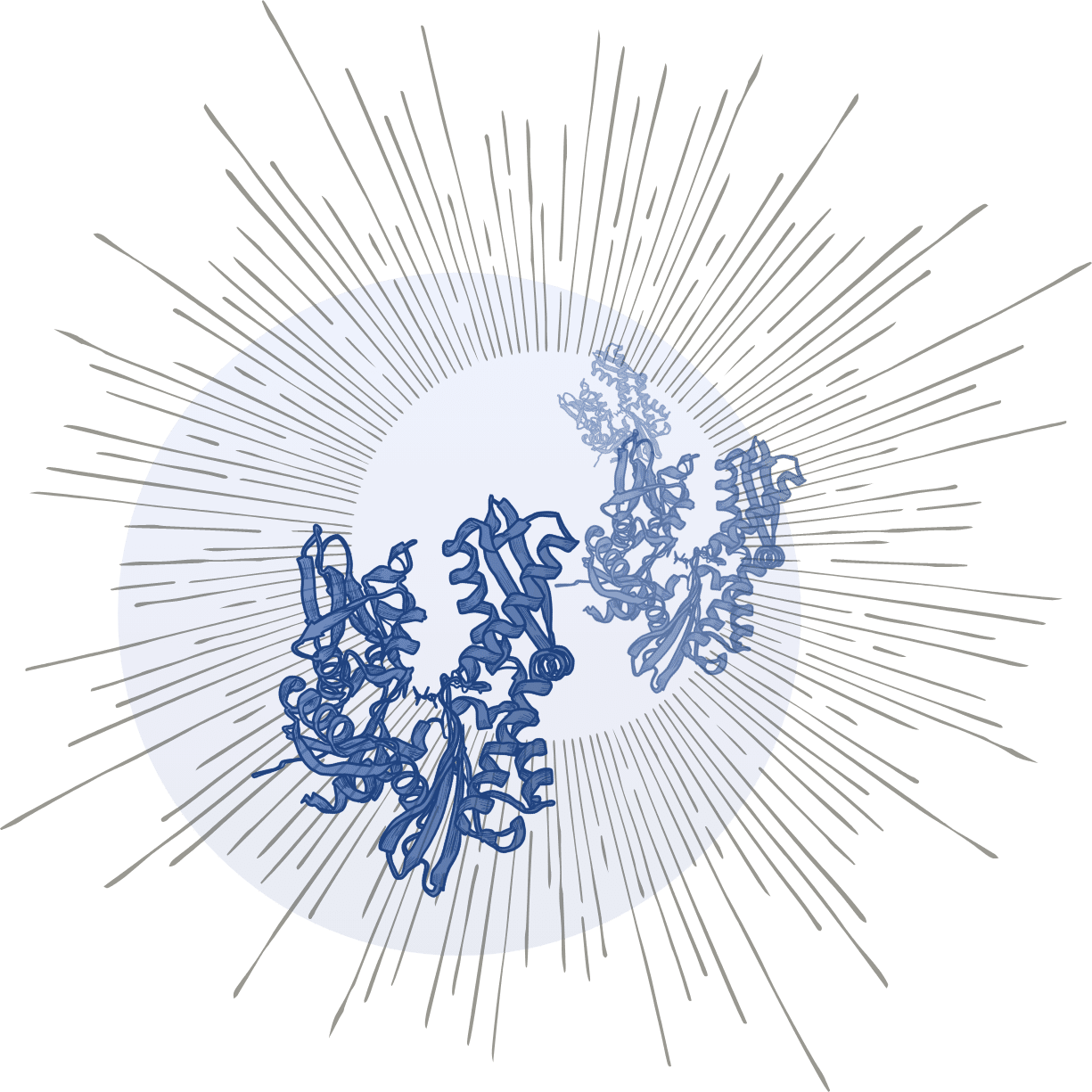Pipeline
‘1805

Potential Platform to Treat Multiple Autoimmune Diseases
We are developing ‘1805 for the treatment of patients with moderate to severe rheumatoid arthritis (RA) and ulcerative colitis (UC) while exploring additional indications.
Rheumatoid Arthritis
RA is a chronic inflammatory disease that is currently one of the largest therapeutic segments worldwide, affecting roughly 2 million people in the US alone.1
Steroids, immunosuppressants, and biologics are available, but these treatment options suppress the immune system,2 putting patients at risk of serious infections and other complications. Additionally, 60 to 70% of patients do not achieve remission,3 and ~20% of patients are non-responsive4 to available therapies.
Patients with RA need improved therapies that achieve long-lasting remission without unwanted side effects.
In preclinical models, ‘1805 demonstrated long-term anti-inflammatory and immunomodulatory effects5, in addition to a reduction in fibrosis, cartilage destruction, cavity erosion and osteoclast numbers. Data from a Phase 2 trial6,7 investigating ‘1805 in 24 patients with severe RA nonresponsive to standard of care demonstrated its potential as a safe and effective treatment for RA, including rapid onset (week 3) and sustained remission (12 weeks) following a single intravenous dose. The clinical response correlated with an increase in activated T regulatory cells (Tregs), key immune cells associated with immune regulation and self-tolerance.
A Phase 2 trial investigating ‘1805 as a potential treatment for patients with moderate to severe RA is planned.
Ulcerative Colitis
UC is a chronic inflammatory bowel disease (IBD) that causes inflammation and ulcers in the digestive tract, impacting about 1 million people in the US8 alone. Many patients with UC also have comorbidities, making them susceptible to other infections, as current UC treatments often weaken patients’ immune systems.
While there are various options for the symptom management of UC, patients often experience negative side effects or continued health challenges that impact their quality of life. Between 25% and 33% of people with UC will undergo surgery during their lifetime because current therapies do not address the inflammation at its source.9
In ex-vivo models of IBD, ‘1805 has shown the ability to increase T regulatory cells (Tregs), key immune cells associated with immune regulation and self-tolerance, and prevent the generation of pro-inflammatory T effector cells.10
A Phase 2a trial investigating ‘1805 as a potential treatment for patients with UC is in preparation.
Non-infectious Uveitis (NIU)
NIU, or inflammation of the inside of the eye, is a leading cause of adult blindness in western countries,7 affecting about 300,000 patients annually8 in the US. Untreated, NIU can cause vision loss in up to 40% of patients, interfering with productivity and negatively impacting quality of life.
Out of the approximately 100,000 patients with NIU treated every year, roughly 50% are nonresponsive to the only approved biologic. Steroids remain the mainstay of therapy but can lead to unwanted ocular and systemic side effects. Most patients are unable to achieve long-term disease remission with available treatments.
A Phase 2 trial investigating ‘1805 as a potential treatment for patients with NIU is expected to start soon.
‘1805 Publications
REFERENCES
- Helmick CG, Felson DT, Lawrence RC, et al; National Arthritis Data Workgroup. Estimates of the prevalence of arthritis and other rheumatic conditions in the United States. Part I. Arthritis Rheum. 2008;58(1):15-25.
- American Academy of Allergy, Asthma & Immunology. Immunosuppressive medication for the treatment of autoimmune disease. https://www.aaaai.org/conditions-and-treatments/related-conditions/immunosuppressive. Accessed April 5, 2021.
- Brown PM, Isaacs JD. Rheumatoid arthritis: from palliation to remission in two decades. Clin Med (Lond). 2014;14(suppl 6):s50-s55.
- de Hair MJH, Jacobs JWG, Schoneveld JLM, van Laar JM. Difficult-to-treat rheumatoid arthritis: an area of unmet clinical need. Rheumatology (Oxford). 2018;57(7):1135-1144.
- Brownlie RJ, Myers LK, Wooley PH, et al. Treatment of murine collagen-induced arthritis by the stress protein BiP via interleukin-4-producing regulatory T cells: a novel function for an ancient protein. Arthritis Rheum. 2006;54(3):854-863.
- Kirkham, B et al. 2016. Safety and patient response as indicated by biomarker changes to binding immunoglobulin protein in the phase I/IIA RAGULA clinical trial in rheumatoid arthritis. Rheumatology, vol 55 (11): 1993–2000.
- Hall C, et al. 2024. “The Biologic IRL201805 Alters Immune Tolerance Leading to Prolonged Pharmacodynamics and Efficacy in Rheumatoid Arthritis Patients.” International Journal of Molecular Sciences. 25(8):4394. https://www.mdpi.com/1422-0067/25/8/4394
- Centers for Disease Control and Prevention. (2022, April 15). People with IBD have more chronic diseases. Centers for Disease Control and Prevention. https://www.cdc.gov/ibd/features/IBD-more-chronic-diseases.html
- Marc D Basson, M. (2023, March 8). Ulcerative colitis. Practice Essentials, Background, Anatomy. https://emedicine.medscape.com/article/183084-overview#a6
- Company press release: https://revolobio.com/2023/06/05/revolo-biotherapeutics-presents-new-data-for-1805-in-inflammatory-bowel-disease-and-rheumatoid-arthritis-at-the-5th-treg-directed-therapies-summit/